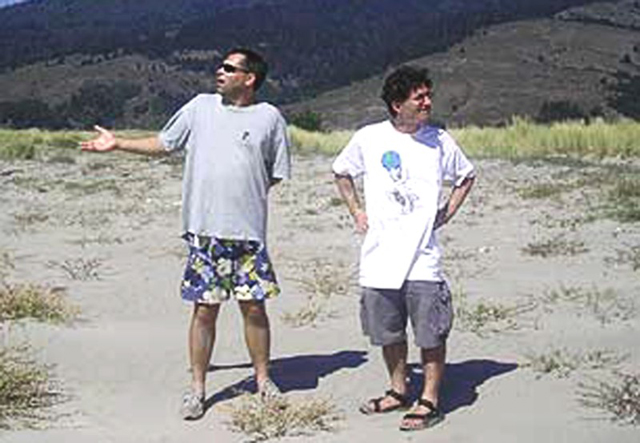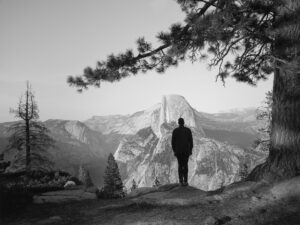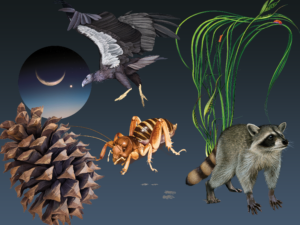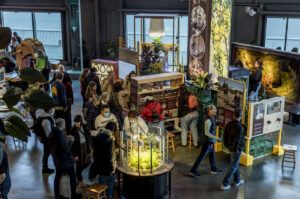The universe: sparse matter, mostly vacuum. Almost every year since 2004, Dave Grossman and Pat Mundy have installed a temporary scale model of the solar system on Stinson Beach to highlight the grand emptiness of much of the universe.
Grossman and Mundy met as undergraduates at Berkeley where Grossman studied electrical engineering and computer science, while Mundy studied English. Both musicians, they played in several bands together. They now work in hi-tech jobs, Grossman as director of design at a computer game studio and Mundy as founding partner of a data analysis firm. We recently interviewed them to learn more about the Solar System Perspective Project and its creators. (See our event listing for details on visiting the solar system yourself!)
BN: Are you guys originally from the Bay Area?
DG: I was born in San Francisco, but early on we moved to Louisiana, Cincinnati and Newport Beach. I came back to the Bay Area to attend college. I loved it immediately. I was here for good.
PM: I was born in San Francisco and grew up in Madrone Canyon in Larkspur. I haven’t always lived here, but I’ve always come back, because of friends, family, and direct access to beaches, mountains, and the Sierra.
BN: How did you become interested in astronomy? Do you consider yourself amateur astronomers?
PM: I’m definitely an amateur astronomer. I’ve been into telescopes, stars, galaxies and nebulae since my earliest years. I ‘ve read a lot of science fiction.
DG: I wouldn’t call myself an astronomer. For me, it’s more about being interested in the universe in general. I ‘ve also read a lot of science fiction, which probably contributed to my thinking about how enormously vast the universe is, and what kinds stuff might be floating around in it.
BN: Why build a model solar system?
DG: Pat and I discovered that we’d both been thinking independently about using a true-scale model to demonstrate how much empty space there is in the solar system. I’d been imagining something across San Francisco. Pat suggested Stinson Beach. We dug out my textbooks, whipped up a spreadsheet, and were on our way.
BN: What are some details of your model?
DG: We worked out the scale so that the distance from the sun to Neptune would be the length of the beach. This is roughly three miles. It comes out to a scale of roughly one to one billion. The sun is 56 inches across. Mercury is about a fifth of an inch in diameter. We use a peppercorn to represent it.
PM: To allow myself and other people to have a chance to visually grasp how much SPACE there is compared to the “STUFF” that’s in it.
DG: It’s about imagining our place in the universe and all the other stuff that might or might not be out there.
PM: Few people see it compared to the number of people on the beach, but many track us down and encourage us to let newspapers and schools know about it.
BN: How do you measure the success of this project?
DG: We get direct audience feedback when people find us on the beach and talk to us about it. That’s the best part of the entire exercise. If somebody has picked up even one fun fact or had their imagination stimulated in any way, that’s also a success.
PM: I just enjoy it and it still boggles my mind to see it laid out each time. I think walking to deploy the outer planets is a big part of internalizing the size of the space.
BN: What challenges do you face?
DG: The sun, as a balloon, has managed to pop on a number of occasions. Or escape in the wind. The first two years Uranus and Neptune went missing over the weekend. We learned later that they weren’t stolen, but were removed by security guards who hadn’t been told about the project. Nowadays we coordinate with them.
BN: What is your favorite outdoor destination in the Bay Area?
PM: Stinson Beach.
DG: I like the Marin Headlands for views, Muir Woods for trees, China Camp for bike riding and pretty much any beach as a place to relax.
» Grossman and Mundy will be installing this year’s model on September 15 and 16.
» To learn more about the Solar System Perspective Project, please visit http://www.phrenopolis.com/






